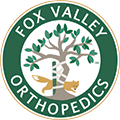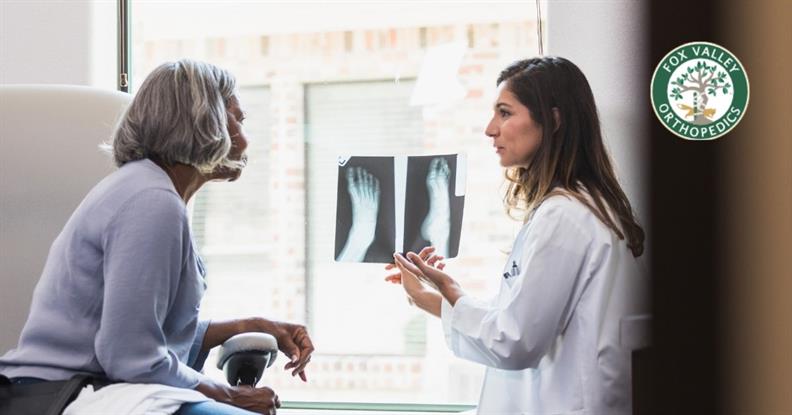When to See a Sports Medicine Specialist
- Category: Physical Therapy, Sports Medicine Specialist, Orthopedic Surgeon
- Posted On:
- Written By: Fox Valley Orthopedics
.jpg)
Recognizing When to Seek Specialized Care
It’s frustrating to sit on the sidelines because of an injury. Whether you're a professional striving for peak performance or someone who just enjoys staying active, the thought of not being able to move the way you're used to can be discouraging. But knowing when to address pain and how to handle it can make all the difference.
Identifying Common Injuries
Understanding Symptoms and Severity
Sprains, strains, and fractures are some of the most common sports-related injuries. Sprains usually affect ligaments, particularly around joints like the ankle or wrist. They can cause swelling, pain, and restricted movement. Strains, on the other hand, involve muscles or tendons, often presenting symptoms such as sudden pain or spasms. Fractures are more severe, involving broken bones that lead to sharp pain, swelling, and deformity.
While some injuries might seem minor, they can escalate quickly if left untreated. Persistent pain, trouble bearing weight, or difficulty moving the affected area are often indicators that you should seek professional evaluation. Early attention prevents minor issues from becoming long-term problems.
Acute vs. Chronic Injuries
Acute injuries happen suddenly, often from accidents or impacts, like twisting an ankle or taking a fall. These require immediate care and can sometimes lead to surgical intervention. Chronic injuries, like tendonitis or shin splints, develop over time. They’re usually caused by repetitive movements or overuse.
When symptoms linger or worsen, it might be time to consult a specialist. At Fox Valley Orthopedics, we assess each injury carefully to determine the right treatment plan, ensuring you can recover safely and avoid further harm.
What Sports Medicine Specialists Do
More Than Just Treatment
Sports medicine is about more than just fixing injuries. Specialists in this field are focused on your health from all angles, whether that’s preventing new injuries, developing tailored rehabilitation plans, or offering advice on nutrition to fuel your performance. They work with athletes of all levels, from weekend warriors to seasoned professionals.
These specialists ensure you’re taking the right steps to get back to your activities safely and effectively. They guide you through structured plans that rebuild strength, improve mobility, and, most importantly, help you regain confidence.
Tailored, Non-Surgical Solutions
Not all injuries require surgery. Sports medicine professionals offer non-invasive treatments like physical therapy or targeted exercise programs. They might recommend braces or supportive equipment to aid recovery or even use localized treatments like injections to minimize pain and inflammation.
At Fox Valley Orthopedics, our specialists collaborate with you to determine the best path forward, ensuring every solution aligns with your health goals and lifestyle.
Understanding When Surgery Is Necessary
Recognizing the Need for Surgical Care
While many issues can be resolved without surgery, some injuries call for more extensive intervention. Severe fractures, ligament tears, or chronic conditions that don’t respond to other treatments may require surgical procedures. For example, ACL reconstruction or joint realignment from a complicated fracture ensures long-term functionality and prevents further damage.
The experienced orthopedic surgeons at Fox Valley Orthopedics are skilled across various procedures, including minimally invasive techniques like arthroscopy. These approaches not only lead to smoother recoveries but also reduce downtime, getting you back to your favorite activities as efficiently as possible.
Every Step of Recovery Counts
Surgery is just one part of the process. Recovery afterward is just as crucial and often involves a combination of physical therapy and guided follow-ups to ensure proper healing. Our team works closely with you post-procedure to monitor progress, adjust rehabilitation as needed, and provide the support you need every step of the way.
The Role of Imaging in Diagnostics
Key Tools for Accurate Diagnosis
Imaging plays a significant role in figuring out what’s going on beneath the surface. X-rays are often the first step for fractures or dislocations because they provide quick and clear views of bones. For soft tissue injuries, MRIs are invaluable, offering detailed imagery of tendons, muscles, and ligaments.
Sometimes, both methods are used together to provide a comprehensive understanding of the injury. This ensures that no detail is overlooked, allowing specialists to create a precise and effective treatment plan.
Advancements in Technology
Imaging technology continues to improve, making diagnostics faster and more accurate. From ultrasounds that offer real-time visuals to 3D imaging that gives an in-depth look at complex injuries, these advancements allow for better care and quicker recoveries.
At Fox Valley Orthopedics, we rely on state-of-the-art diagnostics to provide a clear and thorough understanding of every injury, ensuring treatment plans are built on accuracy and precision.
Take Control of Your Recovery
Knowing when and how to take action can shape your recovery and help you return to doing what you love. Whether you need non-surgical support, advanced diagnostics, or surgical intervention, the right care starts with a team that listens to your needs and matches them to the best solutions.
If you’re ready to take the next step in your recovery journey, call (630) 584-1400 today. Our team is here to provide personalized, compassionate care at every stage, so nothing holds you back for long.



